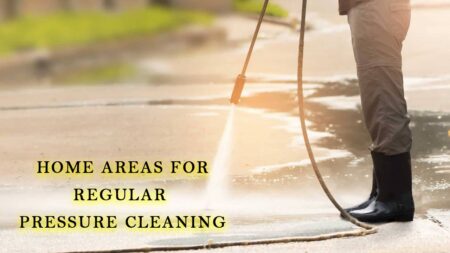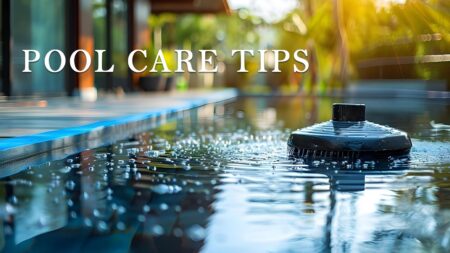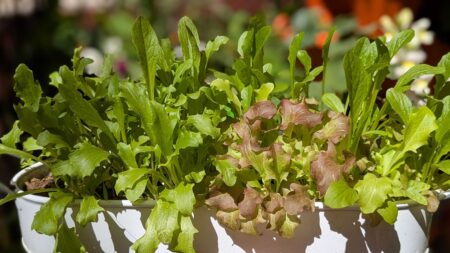Mould can be very harmful for your home and personal health if it is not taken care of at the right time. Thus dealing with mould is very important to ensure cleanliness in your home. Unfortunately, it can be a tough job if you don’t know how to get rid of it and don’t have the right mould remover products to get the job done. Since mould thrives in damp and humid environments, you have to identify and eliminate the source of moisture to prevent mould from recurring.
There are several ways of preventing the occurrence of mould at your home like repairing any leaks in areas such as the roof, plumbing, or walls. In addition, you also have to ensure that there is proper ventilation in the bathroom, kitchen, and other areas prone to high humidity. If mould already exists in these areas, then you have to get rid of it using mould remover products. In this article, we share some useful ways on how to remove mould from walls and solid surfaces.
Remove Mould Using White Vinegar
You can use white vinegar which is normally found in every household. White vinegar is a natural and cost-effective solution known for its mould-killing properties. To use it, you only need to mix white vinegar with water in a spray bottle with a 1:1 composition. Once you have the solution ready, you can spray the areas infested with the mould and let the solution sit there for at least one hour. After the wait, you can then scrub the mould with a brush or sponge and wipe the areas clean, and allow them to dry.
Get Rid of Fungus With Baking Soda
Another effective way to scrub away mould and prevent its return is to use baking soda. To use it, you can start by mixing one tablespoon of baking soda with water to create a paste. Once the paste is ready, you can apply it to the surfaces infested with mould and scrub them using a brush. Finally, you can rinse the surfaces with water and wipe them dry to finish the job. In addition, you can also sprinkle a light layer of baking soda on the same surfaces to prevent mould from growing in the future.

Use Hydrogen Peroxide and Say Bye to Mould
Hydrogen peroxide is a strong antifungal and antibacterial agent that can effectively kill mould. To apply this substance, you can first pour 3 percent hydrogen peroxide into a spray bottle but don’t dilute it. Once you have the substance ready to use, you can start spraying it on the areas infested with mould and let it sit on the surfaces for 10-15 minutes. After the wait, scrub the mould with a brush or sponge and then rinse the surfaces with water before wiping it dry with a clean cloth.
Tea Tree Oil Solution is Effective as Well
While tea tree oil proves to be a potent natural solution for removing mould, it comes at a higher cost compared to certain other environmentally friendly alternatives. However, a mixture of two teaspoons of tea tree oil with two cups of water can provide lasting efficacy. Apply the solution to mould spores without rinsing. It’s worth noting that tea tree oil carries a robust scent that will diminish over a few days.

Citrus Seed Extract and Water Comes to Rescue
In contrast to vinegar and tea tree oil, citrus seed extract, such as grapefruit, is odorless. Blend approximately 20 drops of the extract with 2 cups of water, transfer the mixture into a spray bottle, and apply it to the mould. Just like other solutions, do not rinse.

Also Read: Ways to Remove Rust Stains From Metal Outdoor Furniture
Clove Oil Functions Perfectly in Mould Removal
Here’s another natural remedy for mould removal. Combine 1 teaspoon of clove oil with 2 cups of water, transfer the solution to a spray bottle, and apply it generously. Allow it to sit overnight, and in the morning, wipe it clean. It’s advisable to use a microfiber cloth to capture the spores.

Alcohol can Also Be Used For Removing Fungus
Alcohol serves as a disinfectant, capable of eliminating microorganisms such as mould. It presents an affordable cleaning option that doesn’t generate toxic fumes or leave an unpleasant odor. Nevertheless, the extent of its effectiveness in eliminating mould is arguable.
Use Ammonia to Remove Mould From Solid Surfaces
Ammonia proves effective in eliminating mould from solid, non-porous surfaces like countertops, tiles, or glass. However, its effectiveness is less when it comes to preventing mould growth in porous materials such as drywall or wood. An important drawback of utilizing ammonia lies in its highly toxic nature. When using ammonia for cleaning mould, take precautions and wear gloves, a facemask, and safety goggles.
Using Bleach is an Effective tip
Bleach is highly efficient in eradicating mould. The application of bleach not only sanitizes the surface but also makes it resistant to future mould growth. Although just like ammonia, bleach exhibits effectiveness exclusively on non-porous surfaces and materials. It excels in cleaning tiles, mirrors, glass, countertops, sinks, and bathtubs.
You Can Use Borax For Mould Removal
Considered among the top choices for household mould removal, borax stands out as an excellent product. This natural compound, while toxic if ingested, proves relatively safe for cleaning purposes. Notably, borax distinguishes itself from other mould removal products by not emitting toxic fumes, causing skin irritations, or posing harm to the environment. Functioning as a natural fungicide and herbicide, borax is effective in eliminating a wide range of household mould spores.
Follow Homecrux on Google News!




